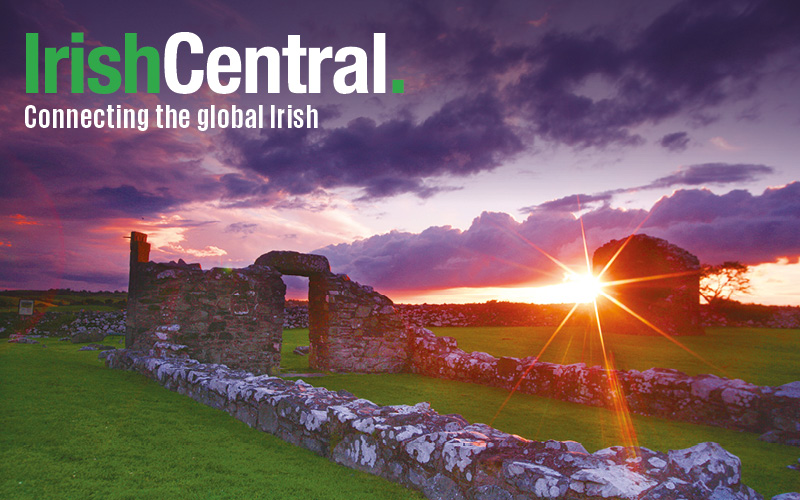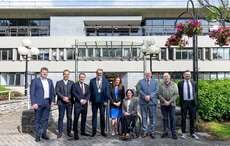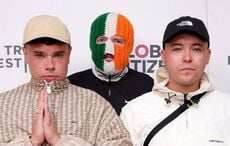The Vanishing Ireland Project began in 2001 with the aim of chronicling an Ireland that seemed to be disappearing rapidly. I teamed up with Co. Kildare-based photographer James Fennell and began extensively touring Ireland, taking photos and documenting people’s stories.
It’s remarkably easy to forget the frenetic pace of change on this island a decade ago. Everything had accelerated to such an astonishing degree that even children agreed time was flying.
In those heady days, much about the past seemed irrelevant. Emigration had come to an abrupt halt and most young people were earning good money, investing it in houses, cars and leisurely holidays. The day-to-day present was all we could think of.
But for many men and women of senior vintage, the changes were deeply alarming. Many stalwarts of generations past were proving to be intensely vulnerable in this brave new Ireland.
Church authority had all but collapsed. Politics was following fashion onto the catwalk. Most farms were now framed by tarmac roads, supporting a relentless convoy of cars, lorries and motor-bikes. The friendly villages of old were an increasing rarity, either because the post office, pub and creamery had closed down, or because the fields around them had been developed into housing estates and retail parks. Ireland was changing utterly, and it was all terribly fast.
It was our simple ambition to chronicle the memories of the older generations as quickly as we could. I interviewed people about their life story and family background, and James photographed them in situ.
We started with people we knew, mostly bachelor farmers in our home counties of Kildare and Carlow. Then we upped the ante and headed on a series of road trips all over Ireland, heading down every back-road we could find, sometimes on a whim but mostly because someone had recommended a particular character to us.
We expanded our brief to encompass any man or woman over the age of 70 who had experienced a traditional, working class upbringing. We sought out blacksmiths, saddlers, farmers, fishermen, housemaids, lace makers, publicans, postmen, thatchers, musicians, anyone who would help us to gain a better understanding of a world which was fading fast.
The Vanishing Ireland project is gathering momentum at all times as more and more people turn to face our past. To younger generations, the sepia-hued world of our grandparents is sometimes difficult to comprehend. It seems like an almost make-believe land of thatched cottages, potato furrows, pony traps, and American wakes. But the stage on which they played out their lives was little different to that of their grandparents before them. And of course it was every bit as real as our own.
The people we met during this project have invariably been charming, courteous, amusing and friendly. Some were eloquent; others indecipherable. Some hardly said a word. One or two didn't draw breath. Some spoke profound truisms that no philosopher has yet considered. Others invented everything as they went along. They all completely understood the nature of this project, plying us with tea and whiskey while they coloured in the past with their memories and mused upon the quandaries of the present.
There is much we can learn from these tribal elders. Raised in an age before cars and televisions, most lived an outdoor life, rising with the dawn, working in the fields, strolling the roads, always in tune with both the landscape and the weather. Their hardy constitutions undoubtedly stem from a childhood where they all walked, and sometimes rowed, to and from school. When they were young, horses, ponies and donkeys formed the backbone of rural Ireland. Many lament the end of that era but others relish the way in which the ‘Machine Age’, as one farmer called it, took the ‘hardship’ out of daily life.
Ireland has an incredibly rich history, albeit tragic and dark in many places. The Vanishing Ireland project is an attempt to bring the more recent past to life through the stories, both humorous and sad, of those who remember how things were when the world was younger. It is our great hope that these interviews inspire others to take a moment to think of old timers whom they know, to phone them or meet for a chat, and to write down or record the stories they hear.
In the past six years, James and I have published three volumes of the best-selling 'Vanishing Ireland' series, with sales now in excess of 62,000 copies.
Here are a choice few stories and faces from the project, men and women who have a tale to tell about their connection the United States:
JOHN WILLIAM SEOIGHE
Rossaveal, Co. Galway
Currach Oarsman and Hooker Sailor
Born 1919
The Seoighe family has been rooted in the Irish-speaking traditions of Connemara’s island life since time began. And there is something about John William Seoighe that instantly connects him to a time when the grizzle cheeked fishermen of Ireland’s Atlantic coast synchronised their oars with those of the great mariners who sailed the oceans from the Barbary Coast to the Basque and over the far horizon to the cod-plenty waters of the New World.
He must have launched ten thousand currachs in his time. Together with three of his Seoighe cousins, he won a record four All-Ireland Rowing Titles, a three-in-a-row between 1956 and 1958 and a fourth in 1961. They also won numerous Galway hooker regattas along Connemara and the coast of County Clare. And when he wasn’t racing, John William was making his money carrying turf from his island home to the people on the Aran Islands.
In 1964, John packed his wife and six younger children onto a boat, sailed out from Inish Barra, docked in Galway, drove to Shannon Airport and flew off to a new life in Boston. Six years later, he returned to Connemara where he now lives with his son Padraig Seoighe, daughter-in-law Cait and their two young children, Róisin and Colm, an extremely talented pair, well known in the west for their singing, dancing and acting prowess.
LIZA MULVIHILL
Moyavne, County Kerry
Dairymaid & Cook
Born 1915
Liza was the fifth of ten children born to Paddy Mulvihill, a thatcher, who lived “in the heart of a mountain” near Moyvane, “with a lot of turf all around us”.
One of her earliest memories is of standing with her mother at the cottage door when a troop of Black and Tans began coming down the mountain. “I got afraid seeing all the men and I ran. One of them put up the gun to shoot me. They thought I was running to tell the IRA they were coming. My mother was in a panic until another one said, “Stop, don’t shoot the child.”’
Liza worked as a dairymaid and housemaid for most of her life but in 1975 her sense of adventure took her to New York. While in the Bronx, she made the acquaintance of Jim and Nellie Gavin who employed two of her nephews at their Golden Hill House resort up in the Catskill Mountains.
The Gavins offered sixty-year-old Liza a job as a cook at the resort. She headed up shortly after St Patrick’s Day and remained there until September.
“It was so mountainy that when I would be going up from the city, I’d think I was going back into Kerry.”
Irish dancing was the highlight, with musicians like Paddy Noonan and her own cousin Martin Mulvihill.
“I danced more there than I did here in Ireland,” she marvels. She returned to the Catskill again for the summer of 1976.
JACK CONNOLLY
Farmer
Glin, Co Limerick
Born: 1916
“Keep your eyes open, your legs closed and send home your money”. That was John Healy’s wise counsel in the book “Nineteen Acres” and it was the best advice Jack Connolly’s four sisters got when they left Ireland in the 1930s, two for the USA and two for England.
Emigration was in the blood. Their uncle Mick sailed for India with the Christian Brothers but later became a gardener in England. “But you know what they say?” says Jack with merry eyes. “The fool is always left behind”.
At the age of 12, Jack got his first job working at Glin Castle and he has been farming ever since. He lives on a modest 16-acre farm with fine views across the Shannon to the rolling hills of Co Clare where his wife was born.
As his centenary approaches, Jack displays the same impressive vigour as an elderly woman he once met who was sawing up a tree. When Jack offered to help, the woman pointed at the logs she had already cut and, a slight breathless, replied: ‘Ah no, sure this will warm me twice’.
LIAM & MAUREEN O'SHEA
Blacksmith
Lauragh Forge, Killarney, Co Kerry
Born 1927
Liam O’Shea is at work when we arrive, silhouetted in the horseshoe-shaped entrance of his forge. A tall, gallant man, he is dressed in blacksmith’s apron and cap.
His family have been farriers in Lauragh for at least six generations. His father Mike was the eldest of thirteen children, all of whom emigrated to America.
Mike was the first to go when, in 1895, aged 20, he made his way to Queenstown pier (now Cobh) and boarded a boat to Canada. By 1910, he was a well-established blacksmith in Manhattan, employing the skills his forbears had honed back in the Kerry forge where his son still works today.
In later years, he would tell his sons of winters so hard that a barrel of boiling would freeze solid within an hour. ‘Sometimes he held the nails in his mouth while shoeing’, recalls Liam. ‘And with the heap of cold, it’d freeze onto his lip’. In 1911, word arrived that Mike’s mother had passed away and Mike sailed back to Ireland to help his father out. He never again left Ireland. None of his siblings ever returned to Ireland except for a sister, many years younger, who flew over in 1982 to attend the wedding of Liam’s oldest son. Two of the sisters famously held court around a table at their house in the Bronx where they conversed in Irish.
For more information visit the project’s Facebook page or their website.
Turtle Bunbury is a best-selling author and historian based in Co. Carlow. His books include the Vanishing Ireland series, Sporting Legends of Ireland and The Irish Pub, all with photographer James Fennell. Turtle is a co-presenter of 'The Genealogy Roadshow' series, which recently aired on RTE One in June 2012. He was also curator of the first ever History Festival of Ireland in June 2012.




Comments